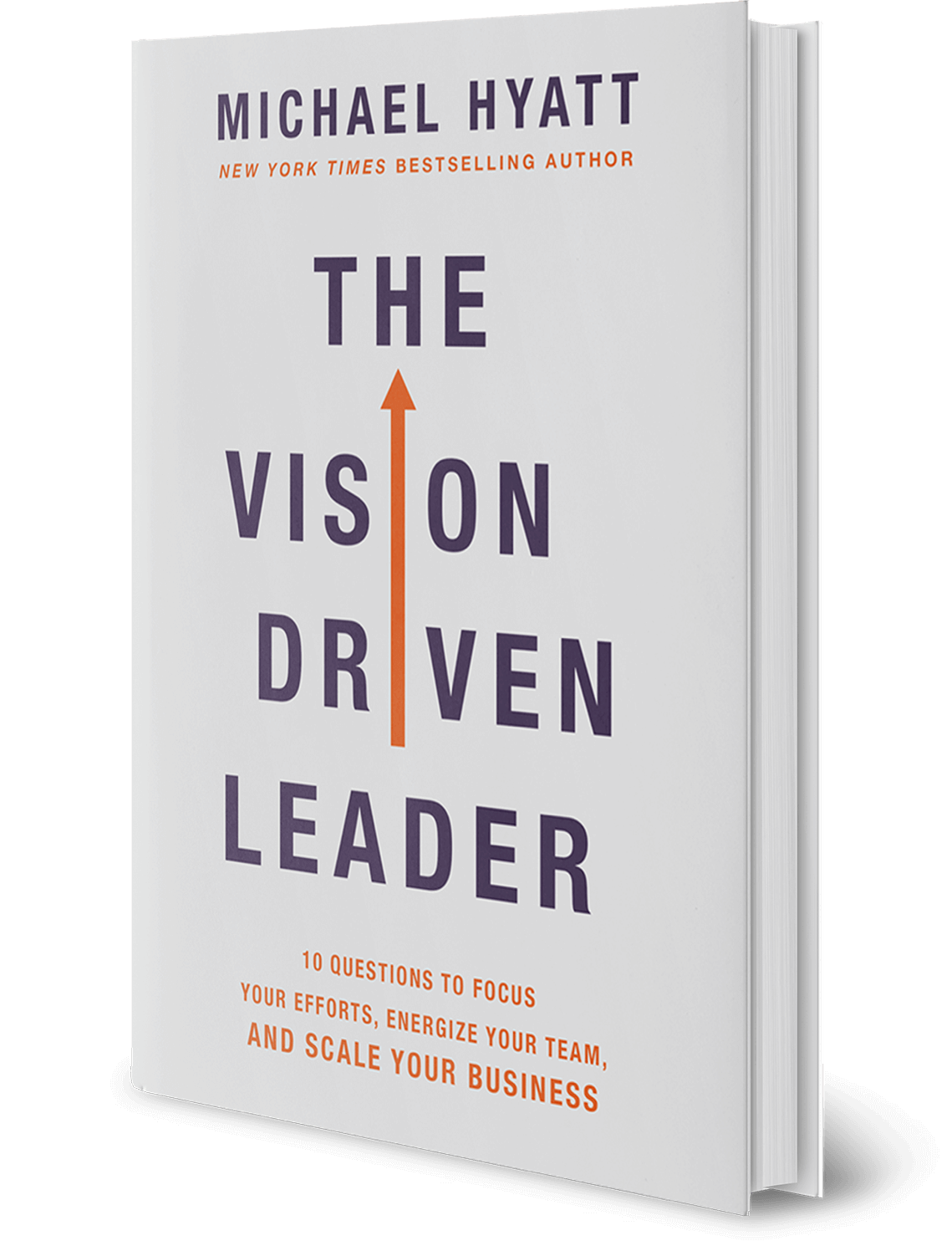I’m a huge fan of Michael Hyatt. His podcasts, This is Your Life and Lead to Win, have been a weekly dose of leadership development for years. His books fill my shelves and more importantly influence my behaviour. The Full Focus Planner, although overpriced in my opinion, has kept me aligned to my vision and on task for almost three years. I guess if my vision is worth accomplishing and the FFP keeps me on track, it’s probably worth the investment, right?
In his latest book, Vision Driven Leader, Hyatt has delivered leadership gold once again! Here are five key takeaways:
Vision is Critical for Leadership: Unless you have a clear vision for where you want to take your organization (company, ministry, Diocese, family) nobody will line up to follow you. A vision is a clear picture of a preferred future. It’s where you want your organization to be in 3-5 years across multiple categories (more on that later). Leaders without vision can never inspire their people toward passionate engagement. But if the vision is compelling enough people will put in their best effort to make it real regardless of the difficulty in doing so.
[bctt tweet=”Unless you have a clear vision for where you want to take your organization, ministry, Diocese, family, nobody will line up to follow you.” username=”BrettPowellorg”]

Vision Distinguishes Leadership from Management: Every business writer has tackled the topic of differentiating leadership from management. Both roles are important to organizations, but they are fundamentally different. Hyatt offers exacting clarity. Vision is what separates inspiring leaders from mere managers. Leaders clarify vision, while managers execute the vision. Leaders use vision to inspire and motivate their people, while managers use vision to keep everyone on track. Leaders stay focused on a longer time horizon (3-5 years out), while managers keep their eye on the short term – this week, this month, this quarter. If the organization has no long-term vision, it is probably over-managed and under-led.
[bctt tweet=”Vision separates leaders from managers. Leaders clarify vision, managers execute. Leaders use vision to inspire, managers use vision to track. If there’s tactical urgency but no vision, you may be over-managing & under-leading.” username=”BrettPowellorg”]
Pitfall Of Vision Deficit Leaders – Missed Opportunities: Hyatt makes a brilliant case for the power of vision in juxtaposing Ken Olsen, founder of Digital Equipment Corporation and Steve Jobs, founder of Apple. In 1977, Ken Olsen said, “There is no reason why anyone would want a computer in their home.” Contrasted by Steve Jobs who said, “The most compelling reason for most people to buy a computer for their home will be to link into a nationwide communications network.” The only thing Jobs was wrong about is that the network would be international, not national, and the World Wide Web was invented 4 years after Jobs said this. A great illustration of what Computer scientist Alan Kay meant when he said, “The best way to predict the future is to invent it.”
The Vision Script: Leaders not only take people to places they’ve never been before, but they also take people to places they, as leaders have never been before. Vision enables leaders to make a way when none previously existed. If you have a blank canvas, it all comes down to clarifying what you want. Unless leaders get crystal clear about their passions, desires and hopes for the future they’ll never stand a chance of achieving it. To get to that level of clarity, you need a vision script.
[bctt tweet=”Unless leaders get crystal clear about their passions, desires and hopes for the future they’ll never stand a chance of achieving it. To get to that level of clarity, you need a vision script.” username=”BrettPowellorg”]
A mission statement and a vision script are not the same things. Mission describes what a business is; a vision describes where the business is going. The mission is here, vision is still out there. The mission is now; vision is next. A proper vision script is not a pithy statement created into a bumper sticker. It is a robust document written in the present tense that describes your future reality (5 years out) as if it were today in four key areas: team, products, sales/marketing and impact. In my work with the Ministries & Outreach Office with Archdiocese of Vancouver, we took Hyatt’s vision script concept and created a document around our own key areas – team, culture, community relations with strategic partners and ministry impact.
[bctt tweet=”A mission statement and a vision script are not the same things. Mission describes what a business does; a vision describes where it is going. The mission is here and now, vision is still out there and what’s next. ” username=”BrettPowellorg”]

Relationship Between Vision and Strategy: A Vision Script is a document that clarifies where you are going. A Strategic Plan is the path and process you are going to take to get there. Vision must come first. No path is more dangerous to take than one that has no end in mind. Without a vision, there is no destination. Without a strategy, there is no path forward. Both are necessary but vision comes first. Starting with a vision that looks 5 years out, we work backwards to create a strategic plan. Then that plan needs to be broken down into meaningful next steps and tangible goals. An annual plan is created to move you closer to your vision in every area. Quarterly stretch goals empower you to move concretely in the right direction. Weekly and daily tasks, aligned to your vision, ensure you are making incremental progress on what matters most – YOUR VISION!
[bctt tweet=”No path is more dangerous to take for an organization than one that has no end in mind. Vision must come first. ” username=”BrettPowellorg”]
[bctt tweet=”Without a vision, there is no destination. Without a strategy, there is no path forward. Both are necessary but vision comes first. ” username=”BrettPowellorg”]

